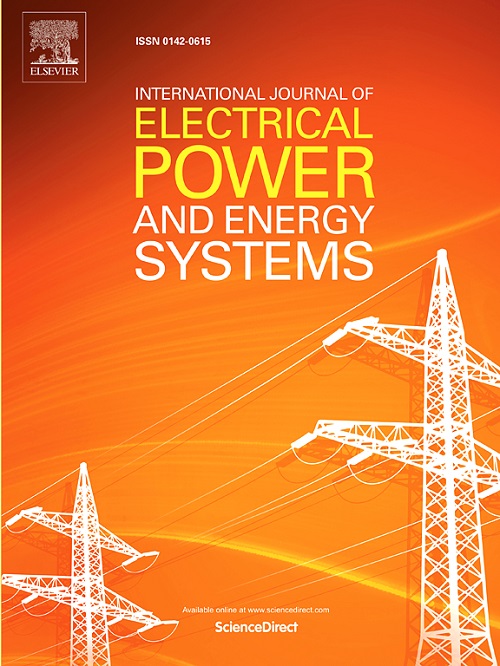Design and experiments of a bidirectional thyristor bridge switch for LC commutation in high-current DC vacuum circuit breaker
IF 5
2区 工程技术
Q1 ENGINEERING, ELECTRICAL & ELECTRONIC
International Journal of Electrical Power & Energy Systems
Pub Date : 2025-04-19
DOI:10.1016/j.ijepes.2025.110685
引用次数: 0
Abstract
In the Quench Protection System (QPS) of superconducting fusion device, high-current DC breaker is an important component. LC commutation circuit provides a negative pulse current to generate zero-crossing point in Vacuum Circuit Breaker (VCB) for DC interruption. In this paper, a bidirectional thyristor bridge switch for LC commutation circuit is proposed, and the test and performance research are carried out. Firstly, the electrical issues of high-voltage stress, large-current temperature rise and voltage balancing protection are analyzed, and a 15 kV/55 kA thyristor bridge switch prototype is developed. In the testing of the prototype, the inconsistency phenomenon of series connected thyristors in trigger conducting stage was discovered. After eliminating external factors, it was found that the inconsistency was caused by the parameter dispersion of thyristors themselves. Through the selection of UGT/IGT parameter, the thyristors after replaced show higher consistency. Moreover, this phenomenon has been explained in detail based on the physical structure of thyristor. Finally, high-current experiments including pulse discharge test of LC commutation circuit and 55 kA VCB breaking test are successfully implemented. The performance of thyristor bridge switch was further verified.
用于大电流直流真空断路器 LC 换向的双向晶闸管桥式开关的设计与实验
在超导聚变装置的淬火保护系统(QPS)中,大电流直流断路器是一个重要组件。LC 换向电路可提供负脉冲电流,使真空断路器(VCB)产生零交叉点,从而实现直流断路。本文提出了一种用于 LC 换向电路的双向晶闸管桥式开关,并进行了测试和性能研究。首先,分析了高压应力、大电流温升和电压平衡保护等电气问题,并开发了 15 kV/55 kA 晶闸管桥式开关原型。在样机测试中,发现串联晶闸管在触发导通阶段存在不一致现象。排除外部因素后,发现不一致现象是由晶闸管本身的参数分散造成的。通过选择 UGT/IGT 参数,更换后的晶闸管显示出更高的一致性。此外,还根据晶闸管的物理结构详细解释了这一现象。最后,还成功实现了包括 LC 换向电路脉冲放电测试和 55 kA VCB 分断测试在内的大电流实验。晶闸管桥式开关的性能得到了进一步验证。
本文章由计算机程序翻译,如有差异,请以英文原文为准。
求助全文
约1分钟内获得全文
求助全文
来源期刊
CiteScore
12.10
自引率
17.30%
发文量
1022
审稿时长
51 days
期刊介绍:
The journal covers theoretical developments in electrical power and energy systems and their applications. The coverage embraces: generation and network planning; reliability; long and short term operation; expert systems; neural networks; object oriented systems; system control centres; database and information systems; stock and parameter estimation; system security and adequacy; network theory, modelling and computation; small and large system dynamics; dynamic model identification; on-line control including load and switching control; protection; distribution systems; energy economics; impact of non-conventional systems; and man-machine interfaces.
As well as original research papers, the journal publishes short contributions, book reviews and conference reports. All papers are peer-reviewed by at least two referees.

 求助内容:
求助内容: 应助结果提醒方式:
应助结果提醒方式:


